Guitarist Danny Kortchmar played on some of the most beloved albums from the 1970’s – Carole King’s Tapestry, James Taylor’s Sweet Baby James, and Jackson Browne’s Running on Empty, to name the most obvious.
But that’s just scratching the surface of his phenomenal career in music, which also included six months with The Fugs, some great fusion albums with The Section, a fruitful collaboration with Don Henley that yielded “Dirty Laundry”, “All She Wants to Do is Dance”, and “Sunset Grill”, producing a Neil Young album, co-writing “Somebody’s Baby” with Jackson Browne, and playing on the Harry Nilsson album Pussy Cats which was produced by John Lennon.
This interview was for a preview article for Kortchmar’s concert at the Maverick Saloon in Santa Ynez with Steve Postell and Dan Navarro on 3/9/16 as part of the Tales From the Tavern concert series. It was done by phone on 2/26/16.
Jeff Moehlis: What can people look forward to at the upcoming concert?
Danny Kortchmar: Well, you know there’s three of us – it’s myself, Steve Postell, and Dan Navarro. All of us have a lot of original tunes. We’ll be talking about how the tunes came about, telling stories about how the songs came to be written, and who we collaborated with, and how they came to be recorded. We’re going to… I would say “pass the mike around”, but of course we’ll be sitting around playing acoustic guitars. So we’ll go around in a circle and we’ll each sing a tune, then we’ll go around again.
There’s a lot of tunes. Dan Nararro’s a fantastic songwriter and singer. He’s played there before. Steve Postell’s the same. And then I have my songs. I’ve never done anything like this before, but I’m really looking forward to it.
JM: Have you known Steve and Dan for a while?
DK: I’ve known Steve for three or four years, and I’ve known Dan for two years.
JM: You’ve had quite a musical journey, and I do want to ask you about the usual suspects. But first I want to ask you about something a bit more obscure. I know that you were in The Fugs way back when. How did you come to join that band, and what were the recording sessions like, say, for the album It Crawled into My Hand, Honest?
DK: You know, I don’t remember that one too much. The one I played on most was one called Tenderness Junction. The Fugs were basically three guys – Tuli Kupferberg, Ed Sanders, and Ken Weaver – and they hired musicians from Greenwich Village to back them up. A lot of friends had done the gig, you know, gone in there and played with them for a while. Some of them stayed, some of them quit. They had a pretty good turnover, The Fugs did, in terms of their side musicians, The Fugettes.
The Flying Machine, a band I had with James Taylor, had broken up, and I wanted a gig, and I wanted to make money. So I went down, it was right around the corner from where we had been playing – we had been playing at the Night Owl Cafe down there off of McDougal Street. I went around the corner to the theater where The Fugs were playing, I auditioned for them and got the job, and then I played with them for about six months.
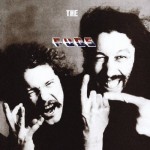
JM: Can you tell me more about playing with them on the Tenderness Junction album? It sounds like a crazy time.
DK: It absolutely was. Those guys, they weren’t really musicians. They were more poets and writers, along those lines, and they had radical politics. They were a trip. Ed Sanders in particular was a very brilliant guy – hilarious. He was really enjoying himself as a rock lead singer. Like I said, mainly he was a poet and a writer. It was crazy. Everything was crazy back then. Remember, it was like the mid-60’s.
The recording sessions were a lot of fun. Nobody really knew what they were doing. There were a few other guys. Kenny Pine, I think, was there, another guitar player. The sidemen were good. The Fugs themselves really hadn’t had much experience actually recording. I think we had my old pal Joel Bishop O’Brien from The Flying Machine on drums. So it was pretty wild. I don’t remember too much about it, but we got a lot done in a short period of time.
I played violin on one of the tunes. For some reason it got into my head that I wanted to play violin. So I got a cheap violin and was scraping away at that. I played that on one of the tunes. It was a lot of fun – being in the studio was such a treat for me. I hadn’t spent much time in a recording studio at that point, so it was really a thrill to be recording and listening back. I soaked it up like a sponge, obviously. I was so interested being in the studio. I wish I could tell you some more pungent stories about it, but I obviously don’t remember that much about doing that. [laughs]
JM: No one remembers that time, right?
DK: Yeah, it was a good time.

JM: A couple of years later you were playing on Carole King’s album Tapestry, her big breakthrough album, which is quite a bit different from The Fugs, although it shared some of the same personnel.
DK: Yeah, Charles Larkey was in The Fugs for a while and played on Tapestry, so that’s right.
JM: What are your reflections on that album, looking back forty something years later?
DK: Well, we had already made two albums with Carole. We had done an album called The City – myself, Charles Larkey, and Carole. She wanted to be in a band situation. She was uncomfortable about being strictly a solo artist by herself. So that was the first real album I played on, in fact, although The Fugs came before that. I consider Now That Everything’s Been Said by The City to be the first actual album that I played on all the way through. Lou Adler produced it. He was absolutely brilliant. I learned so much. It was an incredible experience.
The next one was called Writer, by Carole King. That one James was on, and Joel O’Brien, and Ralph Schuckett, Charley [Larkey]. John Fischbach produced that one. It was also just a brilliant thing. I thought both those albums were great, and was shocked when they didn’t do extremely well.
So by the time we got to Tapestry, I didn’t have any big hopes for it. Not because it wasn’t great, but because the first two, which I thought were great, hadn’t gone anywhere. I had no idea it was going to be as big as it was. But Lou Adler saw it, saw that it was going to be a big beautiful thing.
We went in there – it happened very quickly. Carole’s a brilliant, brilliant arranger, producer, as well as composer. She would go around and talk to each of us individually, and just say a few things, and then we’d start playing. The whole thing was done in three weeks. Everything. Those solos that I played on that album were off the floor, played live. I’m really glad I didn’t know how big the album was going to be because I would’ve pissed my pants. I didn’t know that many people were going to buy it [laughs]. You know, “You’d better play this solo right.” But I didn’t feel any pressure, because I didn’t know if anyone was going to hear it or not.
That’s the way you made records back then. We got in a room together, we had a producer, we had great songs – boom, we hit it. Basically all of it was played off the floor, with a couple of overdubs here and there. Three weeks later the whole thing is done, and out it goes.
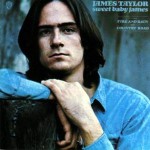
JM: You mentioned James Taylor, another person who you’re very strongly associated with. When you were recording the early albums with him, how did you approach that?
DK: James and I had been playing together for a long time. We kind of grew up together. We met when were both teenagers, 13 or 14 years old. We had been playing together for several years, and we’d also been playing in The Flying Machine, so we had a pretty good idea of how to play together. It just naturally evolved.
Basically when I was playing with James, I try to do what he isn’t doing. I try to weave, what Keith Richards calls “the ancient art of weaving”, where the guitar parts weave together, and mesh in a beautiful way. And that’s really what I was going for, to find something that went with what James is doing.
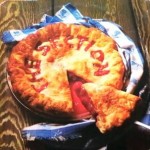
JM: Back to the more obscure side. Around that time, The Section – you and the other musicians that you recorded so much with – released some albums. I particularly like the one with the pie on the cover. Those are basically fusion albums, which is a bit different from what you were doing with Carole King and James Taylor. What inspired you guys to go into that direction?
DK: A couple of things. One is that The Section was on the road with James, and James would come out and do maybe a 20 minute, half hour soundcheck, and then we would stay up onstage and jam, you know, just start playing. So we got into these long jams, and we started to realize that it was a lot of fun to play music that wasn’t songs, that was just… I won’t say jazz, because I don’t think it was jazz, but instrumental music.
Then the other thing, when Mahavishnu Orchestra came out we were all enthralled with them. Now, needless to say, I’m not in the same league with John McLaughlin, but I was inspired by him. I wanted to blaze away like he was doing. Like I said, I’m not in the same league with him, but I was inspired to want to play better than what I was playing, and play more than I was playing. And I think we all were. We all felt that way. We were all very much inspired by Mahavishnu Orchestra. We actually toured with them at one point. We opened the show for them, which was terrifying.
JM: Cool! I imagine that would be intimidating, but also a lot of fun to get to hear them perform.
DK: Right [laughs].
JM: Given those sorts of interests, did you feel like you were holding back a bit when you were playing with James and Carole? Or was it more that you just did what served the song?
DK: Exactly right. When I was playing with James or Carole or any of the singer-songwriters that I played with, I always served the song. I tried to play something that was going to enhance the song, make the singer happy, make the producer happy, make the drummer happy [laughs], you know, find something that was going to help. So it was a very different hat to put on. And it was nice to have the release of The Section where you could play real loud and you could blast away. So that was a great relief for us to be able to get our jollies by jamming and rehearsing, which we did a lot, playing gigs, and then when we went to play singer-songwriter stuff we would calm down and serve the song.
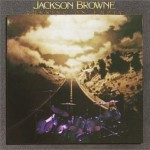
JM: I wanted to ask you about the tour when Jackson Browne recorded Running on Empty. What are some of your favorite memories of that tour?
DK: Well, the whole thing [laughs]. It was an incredible experience, you know. Leave it to Jackson to come up with this wild concept, which I wouldn’t say no one had done before, but he wanted to make an album live, with new material that no one had heard, recorded at soundchecks, recorded at hotel rooms, recorded live onstage. He had written a bunch of songs just for that purpose, and away we went.
The great Greg Ladanyi was with us as the audio engineer. Now you just do it with a couple of laptops, but then we had to carry two 24-track machines, a mixing board, and tons of mics – the whole deal. It all went into a truck everywhere we went, and they would drag it out and set it up and we would play. We cut some stuff in hotel rooms. We cut one track on the bus [laughs].
It actually was very ambitious at that time. He really wanted to capture the feeling of being on the road, with the songs and with the way the songs were recorded. So it was really a challenge. It was just a great band – a phenomenal band – The Section, plus David Lindley, and Rosemary [Butler] and Doug Haywood. We just had a great, great time, all of us. It was really an adventure.
JM: I would guess that there must be tons of other recordings that didn’t make it onto the album. Is there any chance that there would be an expanded edition of that album? I suppose that’s not your decision to make.
DK: Well, it certainly isn’t my decision. But they recorded every show, basically. About half of it was these new tunes that Jackson wrote, that appear on Running on Empty. And then we also did all the tunes he’s well known for from previous albums. So all that stuff exists, it’s all somewhere. Jackson knows where it is. There’s plenty there to put out another album, but not of original tunes, it would be stuff that he had previously recorded. I’d love to hear it, actually. I’d love to hear all that stuff.
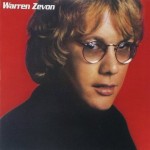
JM: Another artist I want to ask about is Warren Zevon. What were the sessions like that produced his breakthrough album Excitable Boy?
DK: It was obvious when Jackson and Waddy started producing it that he was brilliant, and that he was unique, completely. I had never heard any songs like the songs he wrote, and I’d never heard anybody sing like that either. We were all flipping out – “Wow, this stuff is so out, so unusual!”
I got to play on one track on that album, “Nighttime in the Switching Yard”, and that’s when I got to know Warren a little bit. A very, very bright guy, very educated, very well-read, hilarious. He was really, really something as a human being, a great, great person. I was thrilled to be there. I think I played on a couple of albums subsequent to that. His stuff was always challenging – musically, lyrically, and intellectually. It was a great thrill to play music with Warren and to hang out with him. I miss him a lot.
JM: As a child of the 80’s, probably the first time I heard your playing was the stuff you did with Don Henley. You were there when he was trying to shake off The Eagles, so to speak. Where was his mind at, and what do you feel like you brought to the table when he was doing those early solo albums?
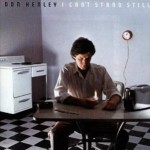
DK: Well, he wanted to make an album that didn’t have any of the typical Eagles things involved in it. For instance, there weren’t any big huge harmony vocals in it like with The Eagles. There’s very little acoustic guitar. It was mostly electric instruments. A lot of synths – well, not a lot, because in 1981 when we started there weren’t any synths [laughs]. Later that gear became popular. But we wanted to go a different way, certainly, than he had gone with The Eagles. One of his main ambitions was to not do whatever The Eagles did. Whatever The Eagles did, don’t do it. So it’s more raw, the way it’s recorded is rowdier, I would say, noisier somehow. Again, Don was very interested in creating his own personality, his own identity separate from The Eagles. He was really determined to do that, and I believe that is what happened.
JM: You and he co-wrote “Dirty Laundry”. How did that come together?
DK: That was one of the first tunes we talked about. We would talk a lot about what Don wanted to say, a lot of conversations before we’d start writing. He had this idea “Dirty Laundry”. He was pissed off at the local newscast which was giving him trouble. He wanted to take on the local 5:00 happy news kind of situation.
So I went home, and I was screwing around on my Farfisa organ and came up with that stuff that you hear, the way the record starts. I thought, “This for sure has got to be ‘Dirty Laundry’.” I played it for Don, and he was like, “Yeah, that’s it.” The repetition of it and the hypnotic quality of it is was led him to tell his story on top of it.
It had the two things we were looking for – it had the big beat, and it had a real story from the point of view. So we figured we’d get them coming and going – if they weren’t listening to the lyrics we’d get them to shake their asses, and if they were listening to the lyrics we’d get them to dig what Don was talking about, in terms of dumping on the media like that. That was the idea. Whatever message we had, we wanted to make sure it had a lot going on musically. So it had multiple levels.
JM: I feel like I’m just scratching the surface of the various things you’ve done over the years. Is there anything else that you’re particularly proud of, that you played on or you produced, or songs you wrote?
DK: I mean, what I’m proud of when I look back on my career is all the amazingly talented people that I got to work with. It’s unbelievable. I feel like I played with a great deal of the greatest singers and songwriters of my generation. And I got to participate with the greatest musicians.
L.A. in the 80’s was just a hotbed of great musicians. Everyone knew everyone else. Everyone kind of collaborated – there was a tremendous feeling of collaboration among all the musicians. Everyone supported everyone else. It was a great time to be in Los Angeles playing music. I guess that’s what I’m most proud of, my association with all these brilliant people.
JM: What advice would you give to an aspiring musician?
DK: [laughs] At this point right now, give it up. Get a day job. Music is so difficult right now. It’s incredibly difficult to sustain oneself, to make money to be able to support yourself or your family.
I would say learn everything that there is to learn, so you can operate in a lot of different ways. I would say if you want to be a musician now, even if you plan on starting a band, you should be able to read music, you should be able to play and know all the genres, and understand everything about music and not judge it. Not say, “Oh, I only play this” or “I only do that”. Learn how to play everything you can. Learn how to play as many instruments as you can. Learn how to operate ProTools. Learn about social media, all the ancillary stuff that goes along with the music business at this point. Just doing one thing, you’re not going to make it anymore.
I was lucky when I came up as basically a guitar player, a songwriter, and a producer. But nowadays you’ve got to be able to run ProTools yourself, play all the instruments. You’ve got to really have a lot of skills going for you in order to have a chance of breaking through. And again, it’s a very tough situation. The recording industry is moribund if not dead altogether. So it’s difficult to make a living, very difficult to make it as a musician. So learn everything you can, and come armed. Be armed and extremely dangerous in terms of your knowledge.
JM: What are your plans, musical or otherwise? Do you have something in the works, or are you more focused on touring right now?
DK: Well, living out here in L.A. I’m working with three different bands. One is a terrific rock band I’m doing with Waddy Wachtel. Then I play with Steve Postell on his project called Night Train Music Club, which is a revolving cast of characters. We play here in L.A. and various places up and down the coast. And then the third thing is what we’re doing up in Santa Ynez, with Dan Navarro, myself, and Steve doing the acoustic thing. So I’m pursuing all three of those, having a lot of fun doing that. That’s basically it.
I have to play. I was born to play music – that’s what I do. I’ve played Madison Square Garden, and I’ve played the club for 25 people in it. It’s the same. You’ve just got to go out there and give your all, regardless. And that’s what I intend to keep doing.
JM: One more thing. I know that back in the 70’s you were in recording sessions with John Lennon. What are your memories of that time?
DK: There were no low’s, there were only high’s. He was a great guy, a terrific guy, very approachable, as sweet as can be. No attitude – nothing. All those reports that you hear about his bad behavior, I never saw any of it. I saw everything for several weeks. It’s true that everyone was kind of loaded, but I never saw him pull rank. He never pulled rank, he never said, “I’m John Lennon.” Never. He was absolutely a doll.
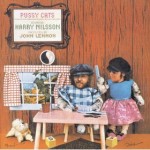
He knew what he wanted. He was producing Harry Nilsson [for the album Pussy Cats] and I was in the band along with a bunch of other musicians. He knew what he wanted, and he was brusk about telling you what he wanted, but not impolite, not rude – with total respect. He was great. He was just a great guy to be around. Lots of great stories. When people talk about Lennon, I don’t really recognize who they’re talking about. The experience I had with him had no negativity at all, ever.
JM: Maybe that’s something to clear up, because I read that he had physically attacked you.
DK: Alright, there was a book written by Albert Goldman [The Lives of John Lennon], and it says in the book that John bit me on the nose, or something like that [laughs]. [The book’s claim is a quote from Dr. John.] It’s total bullshit. It never happened.
He claims this happened on the sessions that John did with Phil Spector, his album called Rock ‘n’ Roll. Alright, I wasn’t on that record. He may have been talking about Jesse Ed Davis, who did play on that record. Maybe he bit Jesse Ed’s nose? Jesse unfortunately is gone and not with us to determine that. But Albert Goldman obviously didn’t do his fucking homework because he should’ve asked me whether Lennon had bit me on my nose. He just printed it. It makes you wonder what else is wrong in that book, what other inconsistencies and inaccuracies this guy had. He obviously didn’t do his research. I should’ve fucking sued him, you know? But I didn’t think too much of it at the time – just more bullshit. I was too busy doing other stuff to worry about it. But there was never, ever any physical problem with John. He was an absolute doll the entire time I worked with him. So that is the truth.
JM: Of course, if John Lennon did bite your nose it would be cool to have a scar from that.
DK: If John had bit my nose, believe me, I’d tell you. I’d fucking remember, I think. It never happened, it never happened. I don’t know what did happen at those Lennon / Phil Spector sessions. I understand it was pretty wild. My buddies were playing on that, and they told me that it got pretty wild in there, pretty hairy with Phil. But I wasn’t there [laughs].
My guess is that any crazy behavior that happened on those Rock ‘n’ Roll sessions was caused by Phil Spector and not by John. Like I said, I wasn’t around then, but I never saw John behave in any way other than absolutely beautifully to everyone.


Discussion
No comments for “Interview: Danny Kortchmar”